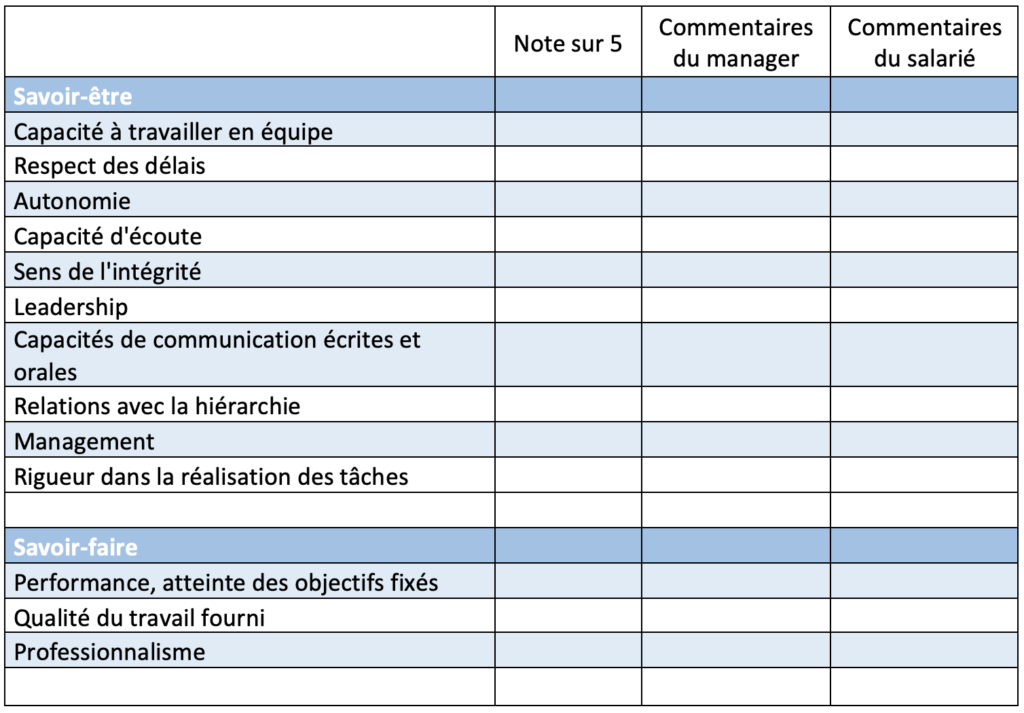
L’entretien annuel est l’occasion de donner un feed-back constructif et de fixer de nouveaux objectifs, en lien avec la stratégie de l’entreprise. Il peut s’appuyer sur une grille d’évaluation d’entretien annuel.
Il permet de dresser un bilan, de mobiliser le collaborateur, de le féliciter pour son travail. L’objectif de l’entretien annuel est la performance du salarié.
Ce rendez-vous annuel d’évaluation doit suivre un déroulement bien cadré, afin de garantir son efficacité.
1 - Analyse des performances du salarié
Au cours de l’entretien annuel, le manager commence par faire le point sur les missions réalisées. Les objectifs ont-ils été atteints ? Une analyse chiffrée des résultats permet de réaliser un bilan de l’année écoulée.
2 - Planification de nouveaux objectifs
Suite à cette évaluation, le N+1 fixe de nouveaux objectifs et définit les plans d’action liés. Il peut, si besoin, proposer des formations.
3 - Échange entre manager et employé
Selon une étude de l’Apec[1], 7 salariés sur 10 estiment qu’il s’agit d’un moment utile (71 %) pour eux. Manager et employé peuvent évoquer tous les types de sujets.
[1] Entretien annuel d’évaluation : un tête-à-tête gagnant (apec.fr)
Par exemple, pour un profil commercial, le manager peut fixer un pourcentage d’augmentation de son chiffre d’affaires ou encore l’ouverture de X nouveaux clients.
Bon à savoir ! Les objectifs doivent être SMART
Selon cette méthode, fixez des objectifs :
Il est primordial de clore cet entretien sur une note positive :

Les 3 points clé à retenir :